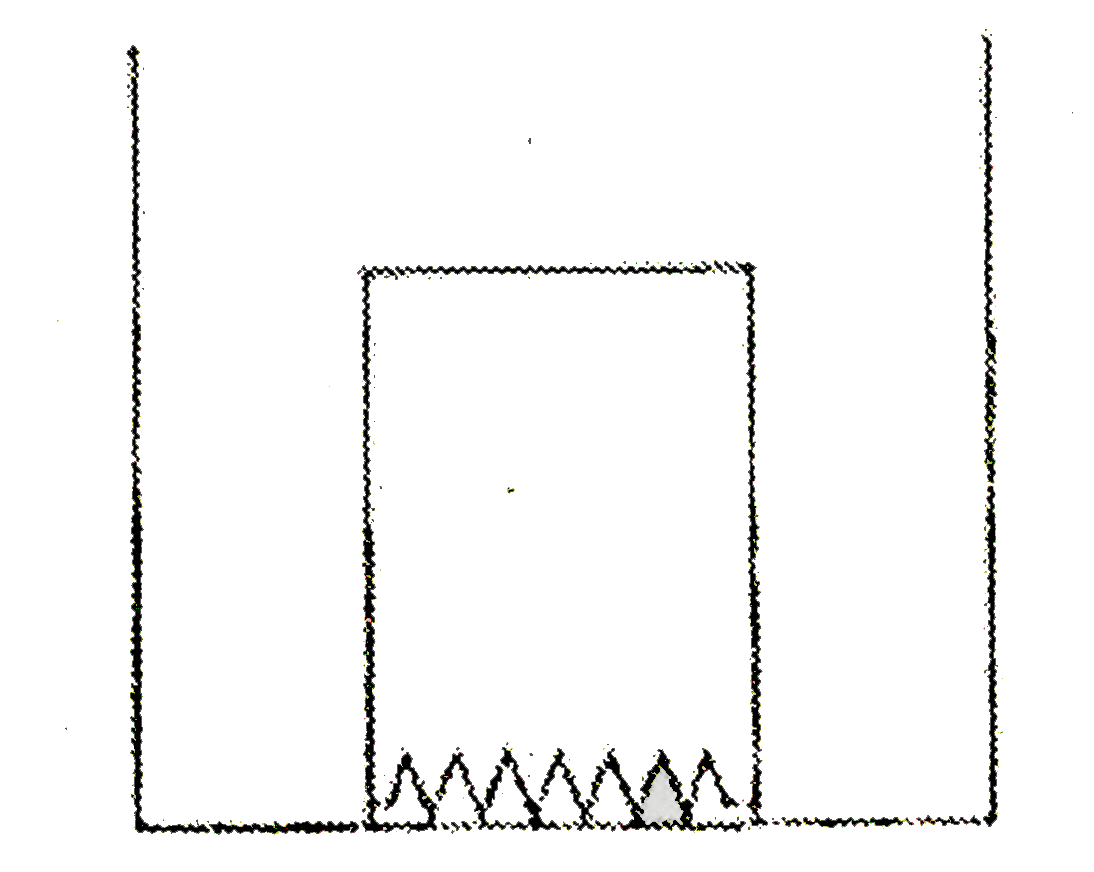0.5 cm ત્રિજ્યાની નળીમાંથી ના સરેરાશ વેગથી ગતિ કરતા પાણીનું વહન ... પ્રકારનું હશે. (, )
ધારારેખી
અસ્થિર
પ્રક્ષુબ્ધ
આમાંથી એક પણ નહિ.
The correct Answer is:A
Step by step video & image solution for 0.5 cm ત્રિજ્યાની નળીમાંથી 10 cm s^(-1) ના સરેરાશ વેગથી ગતિ કરતા પાણીનું વહન ... પ્રકારનું હશે. (eta_water = 0.01 poise, rho_water = 1 g/cm^3) by Physics experts to help you in doubts & scoring excellent marks in Class 11 exams.
Updated on:21/07/2023Topper's Solved these Questions
- તરલના યાંત્રિક ગુણધર્મો BOOK - PHOENIX PUBLICATIONCHAPTER - તરલના યાંત્રિક ગુણધર્મો EXERCISE - Exercise
269 Videos
- ઘન પદાર્થના યાંત્રિક ગુણધર્મો BOOK - PHOENIX PUBLICATIONCHAPTER - ઘન પદાર્થના યાંત્રિક ગુણધર્મો EXERCISE - Exercise
214 Videos
- થર્મોડાયનેમિક્સ BOOK - PHOENIX PUBLICATIONCHAPTER - થર્મોડાયનેમિક્સ EXERCISE - Exercise
460 Videos
Similar Questions
સામાન્ય પુખ્ત વ્યક્તિની શારીરની મહાધમનીમાંથી વહેતા - લોહીની સરેરાશ ઝડપ 0.33ms−1 હોય છે (મહાધમનીની ત્રિજ્યા 0.9 cm). મહાધમનીમાંથી લોહી 30 મિનીઓમાં જાય છે. જેમની દરેકની ત્રિજ્યા 0.5 cm છે, તો ધમનીમાંથી પસાર થતા લોહીની ઝકપ શોધો .
View Solutionસ્ટીલમાં આકાર પ્રતિબળ 4×108Nm−2 કરતાં વધી જાય તો સ્ટીલમાં ભંગાણ સર્જાય છે, તો 0.5 cm જાડાઈની ટીલની પ્લેટમાં 1.0 cm વ્યાસનું છિદ્ર કરવા માટે કેટલા સ્પર્શીય બળની જરૂર પડશે ?
View Solutionબધી જ રીતે સમાન એવા બે ધાતુઓ ના સળિયાઓના છેડા વેલ્ડિંગ કરી આકૃતિ (1) માં દર્શાવ્યા પ્રમાણે જોડેલા છે તેમાંથી 20 cal ઉષ્મા પસાર થતા 4 min લાગે છે,હવે જો આ સળિયાઓને આકૃતિ (2) માં દર્શાવ્યા પ્રમાણે વેલ્ડિંગ કરી જોડવામાં આવે,તો આટલી ઉષ્મા ને પસાર થતા લાગતો સમય.....થાય.
 ,
,
View SolutionCoefficient of vilocity of water =0.01 poise, density of water =1gcm−3. Then the maximum velocity with which water can flow through a capillary tube of radius 0.05cm, without turbulent flow setting in, is
View SolutionA cube (side =10cm) of density 0.5g/cm3 is placed in a vessel of base area 20cm×20cm. A liquid of density 1.0gcm2 is gradually filled in the vessel at a constant rate Q=50cm3/s

The cube will leave contact with the vessel after time t= ......... s.
View SolutionThe conductivity of 0.01 mol L−1KCl solution is 1.41×10−3 S cm−1. What is the molar conductivity (Scm2mol−1) ?
View Solution1 cm त्रिज्या वाले एक पाइप से 6 cm/s कि चाल से पानी बह रहा है । पानी का श्यानता गुणनक 0.01 poise है । रेन्डल्स संख्या कि गणना करे । क्या यह प्रवाह स्थैतिक है ?
View SolutionWater is flowing therough a tube of diameter 1 cm at 8 cm/s. Taking eta=10^(-2) poise the flow of liquid and Reynold's number are
View SolutionConvert 10kg−1m3s−3 into CGS system. (1) 102g−1cm3s−3 (2) 104g−1cm3s−3 (3) 10−2g−1cm3s−3 (4) 10−4g−1cm3s−3
View SolutionWater at 20°C ( coefficient of viscosity= 0.01 poise) flowing in a tube of diameter 1 cm with an average velocity of 10 emfs has the Reynold number:
View SolutionWater is flowing therough a tube of diameter 1 cm at 8 cm/s. Taking eta=10^(-2) poise the flow of liquid and Reynold's number are
View SolutionA cube (side =10 cm ) of density 0.5 g//cm^(3) is placed in a vessel of base area 20 cmxx20 cm . A liquid of density 1.0 g//cm^(3) is gradually filled in the vessel at a constant rate Q=50 cm^(3)//s The cube will leave contact with the vessel after time t= ......... s.
View SolutionA metal plate 10 cm square rests on a 2 mm thick caster oil layer. Coefficient of viscosity of caster oil is 15 poise. The horizontal force needed to move the plate with speed 3 cm s^-1 is
View SolutionDensity of water is ...… ("10 g cm"^(-3)//"1 g cm"^(-3)) .
View SolutionThe conductivity of 0.01 mol L^(-1) KCl solution is 1.41xx10^(-3)" S "cm^(-1) . What is the molar conductivity ( S cm^(2) mol^(-1) ) ?
View Solution
